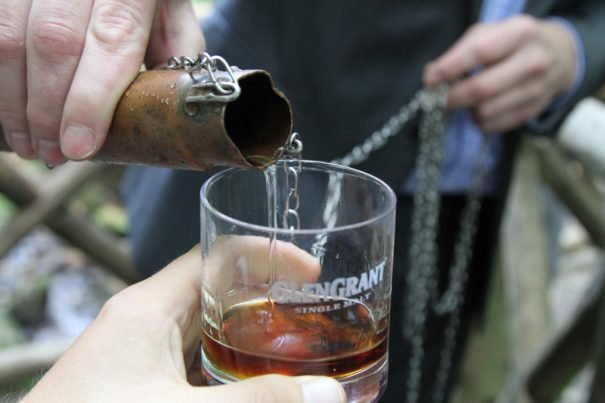
Sticklers for Silly Whisky Rules Have Obviously Never Tasted This Shack Whisky

Sticklers for Silly Whisky Rules Have Obviously Never Tasted This Shack Whisky
Whisky in Rothes
The Back Burn stream meanders across the grounds of the Glen Grant Distillery in the town of Rothes, Scotland. All of those “Glen” names in Scotch whisky refer to a specific place: a glen is a swath of valley, and the latter portion of the name refers to the river that runs through it, or perhaps the town where a distillery is located.
When brothers John and James Grant founded their distillery in 1840, though, rather than calling the new operation the Glenburn Distillery, perhaps, they called it Glen Grant, giving it the family name, an exception to the industry’s naming patterns.
On the Glen Grant property, there is a garden and an orchard, and the quiet pathway through the pristine environs makes for a great strolling spot, even on a suddenly chilly, windy afternoon. We have a guide on this casual jaunt through the gardens, and we’re following along until we reach a wooden pathway taking us right over a bubbling little creek.
Hidden against the side of a rocky outcrop is a small wooden shack. It’s said that the space used to serve as a changing room for children as they went running around and playing in the stream. Thankfully there are no bathing suits or towels to be found in the shack these days, but instead, something much better: a safe.
Its precious cargo is 50-year-old Glen Grant whisky. The revelation sets in for this group of previously sleepy Scotch travelers as we slowly process the ruse to which we had just succumbed: this was no casual stroll at all, but a purposeful whisky walk, one which ended with each of us holding a glassful of a whisky that sells for about $11,000 a bottle once it hits the market in its fancy decanter and display case.
The whisky is spellbindingly copper-brown in the glass, a deep, rust-tinged color, and it offers robust earthy notes of leather and tobacco. It’s a powerful dram, particularly at 54 percent ABV, and it could benefit from a few drops of water, a common practice to help open up the flavors of a strong whisky. Luckily, we’re standing over the Back Burn, allowing our glasses to receive some of that cool and crisp, fresh stream water, building on the 50-year-old whisky with the very same water that gave it life.
Some people say that you shouldn’t add water to your whisky: that any adulteration to the spirit, be it water or ice, simply ruins it. That’s a pretentious, silly rule, and for any sticklers out there who still say otherwise, I suggest you make a visit to the Back Burn and see if you don’t come away convinced.